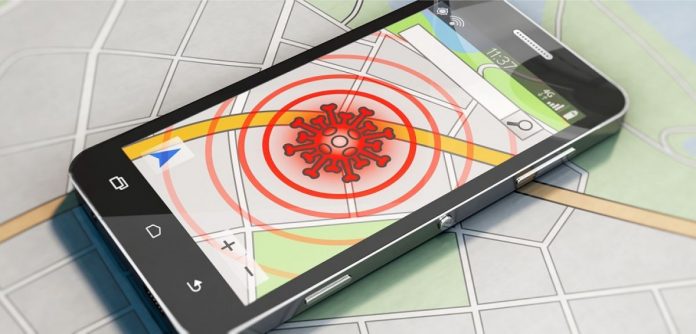The latest research models the potential contribution of Exposure Notifications towards reducing infections, hospitalisations, deaths, and the number of people in quarantine in Washington State’s three largest counties King, Pierce and Snohomish. The study highlights that the more people use Exposure Notification Systems, the greater the reduction in COVID-19 transmissions, and the greater the opportunity to ease restrictive quarantine measures.
Professor Christophe Fraser, co-lead author, scientific advisor to the UK Government Test & Trace Programme and Group Leader in Pathogen Dynamics at Oxford University’s Nuffield Department of Medicine, says: ‘We’ve been exploring different digital contact tracing uptake levels for some time in the UK. We see that all levels of exposure notification uptake levels in the UK and the USA have the potential to meaningfully reduce the number of coronavirus cases, hospitalisations and deaths across the population. For example, we estimate that in Washington State, a well-staffed manual contact tracing workforce combined with 15% uptake of an exposure notification system could reduce infections by 15% and deaths by 11%.’
To help us understand the potential impact that digital contact tracing systems could have, the research teams used Oxford’s epidemiological model OpenABM-Covid19 with the latest real-world data from Washington state on both the epidemic, and on patterns of human mobility and social interactions that occur in homes, workplaces, schools, social gatherings and transportation. With the primary aim of reducing the risk of further waves of COVID-19, the results include different scenarios and outcomes which enable policy makers to consider phased reopening and easing of COVID-19 restrictions, and so enable as many people as possible to return to more normal activities whilst maintaining control of the epidemic.
Matthew Abueg, co-lead author at Google Research, says: ‘The analyses show that the simultaneous or independent deployment of both manual and digital tracing can help control the epidemic in King, Pierce and Snohomish counties, and should support local authorities to meet the key incidence metrics defined by the Safe Start Washington plan before December, 2020.’
Dr David Bonsall, scientific advisor to the UK government’s Test & Trace Programme, clinician and senior researcher at Oxford University’ Nuffield Department of Medicine, says: ‘COVID-19 infects others before we develop symptoms, and some people transmit with only mild or no symptoms at all. Lockdowns and travel restrictions are damaging to society so we need smarter, more efficient systems that notify only the people at risk and keep the rest of us moving freely. Privacy-preserving digital exposure notification systems are an important part of the global response to this pandemic. They will save more lives and reduce increasingly more infections as people gain trust in the systems.’
Professor Christophe Fraser says: ‘The research results build on our previous findings in the UK and suggest a contact tracing app is not a stand-alone intervention, it should be integrated and continually updated alongside other existing and new infection control measures, such as social distancing and restricted travel, until COVID-19 transmission is fully and sustainably under control.’
Shawn O’Banion, at Google Research, says: ‘In order to prevent COVID-19 transmission, we should consider targeted or phased reopening strategies, such as identifying specific occupation sectors or schools, based on less affected industries or age groups, or perhaps more stringent social distancing guidance in places that are permitted to reopen. Our simulations should help public health authorities to strike the balance between protecting people from infection and reducing the social and economic impact of prolonged or repeated lockdowns.’
This study also begins to explore factors relating to cross-border collaboration and contact tracing interoperability by quantifying the effectiveness and resource utilisation between coordinated and uncoordinated deployments.
Dr Robert Hinch, senior researcher at Oxford University’s Nuffield Department of Medicine, says: ‘We’d like to gather further evidence to assess to what extent coordinated deployments of digital exposure notification applications and public health policies result in the more effective COVID-19 infection control, and continue to find ways to ensure the maximum impact for often limited testing, tracing and isolation resources.’















